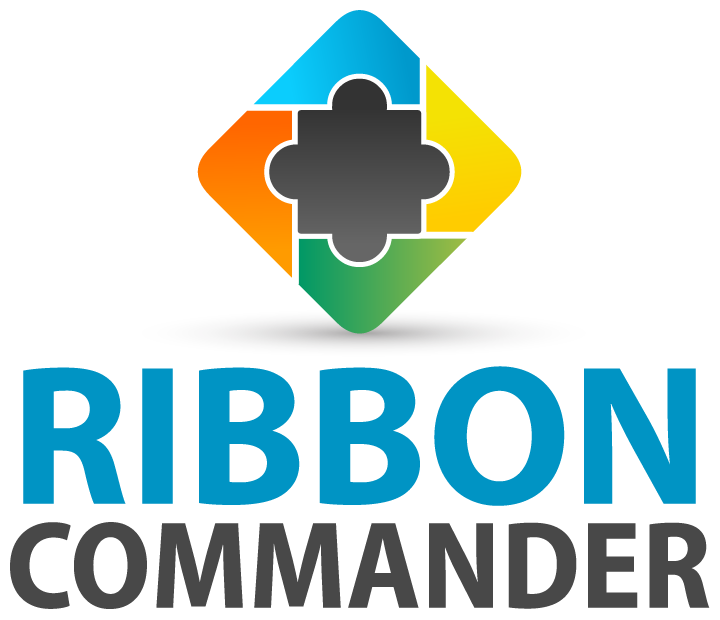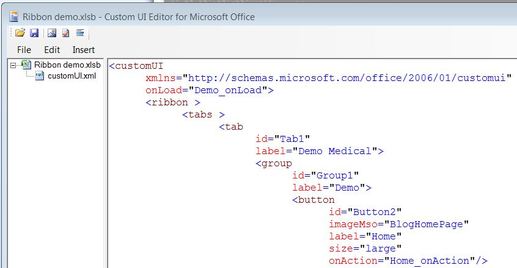The Office ribbon is a graphical user interface, where a set of icons and command buttons are placed on tabs in a tabbed bar. Ribbons use tabs to expose different sets of controls, eliminating the need for many parallel tool bars. Contextual tabs are tabs that appear only when user needs them.
Microsoft touts the ribbon as the modern way to help users find, understand, and use commands efficiently, directly and with a minimum number of clicks, with less need to resort to trial-and-error and without having to refer to Help.
One of the main drivers behind the Ribbon was discover-ability of new functions. Research conducted by Microsoft indicated that a large number of requested features for Office actually already existed in the software ! Some features were buried to the point that users either couldn't find them or had, understandably, become weary of mining the menu system in search of them.
Microsoft touts the ribbon as the modern way to help users find, understand, and use commands efficiently, directly and with a minimum number of clicks, with less need to resort to trial-and-error and without having to refer to Help.
One of the main drivers behind the Ribbon was discover-ability of new functions. Research conducted by Microsoft indicated that a large number of requested features for Office actually already existed in the software ! Some features were buried to the point that users either couldn't find them or had, understandably, become weary of mining the menu system in search of them.
Office Custom UI Editor For Microsoft Office Tool
The Office customUI editor is a tool to edit the Office custom UI XML part in the Open XML file format. The latest version supports dual parts, where one is Office 2007 custom UI and the other is Office 2010 custom UI. The tool was first released in 2009.
Summary features:
Working with XML code is a bit of pain to humans, especially for the ones who are not members in the Mensa society. The customUI editor could prove handy, if all you want to do is add/delete custom icons, modify an existing Ribbon label or replicate an existing control. For example, adding XML code for a button, is more or less a cut and paste task.
- Free tool
- Both Office 2007 & Office 2010 custom UI schemas are supported
- Runs in both Windows 32 / 64 bit and can open any OpenXML file (.xlsx, .xlsm, .xlsb, .pptm, etc)
- Fast read/write operations. Files do not have to be unzip/zipped
- It doesn't handle unicode (UTF-8)
- Image filenames starting with a number cannot be inserted in customUI
- CustomUI may get corrupted, if images with spaces in their filenames are inserted.
Working with XML code is a bit of pain to humans, especially for the ones who are not members in the Mensa society. The customUI editor could prove handy, if all you want to do is add/delete custom icons, modify an existing Ribbon label or replicate an existing control. For example, adding XML code for a button, is more or less a cut and paste task.
Visual Studio Code Editor
Microsoft's Visual Studio Code is a free, redefined, cross-platform code editor that runs natively on OS-X, Linux and Windows. Visual Studio Code is a standalone, lightweight editor and should not be confused with Visual Studio's IDE.
Code offers the streamlined UI of a modern editor with rich code assistance, navigation and an integrated debugging experience. Visual Studio Code offers built-in support for multiple languages, including XML and UTF-8 encoding in unicode.
Read our article about VS Code editor here. To export customUI XML code from Office files, please use our VBA RC Toolkit addin
Code offers the streamlined UI of a modern editor with rich code assistance, navigation and an integrated debugging experience. Visual Studio Code offers built-in support for multiple languages, including XML and UTF-8 encoding in unicode.
Read our article about VS Code editor here. To export customUI XML code from Office files, please use our VBA RC Toolkit addin








